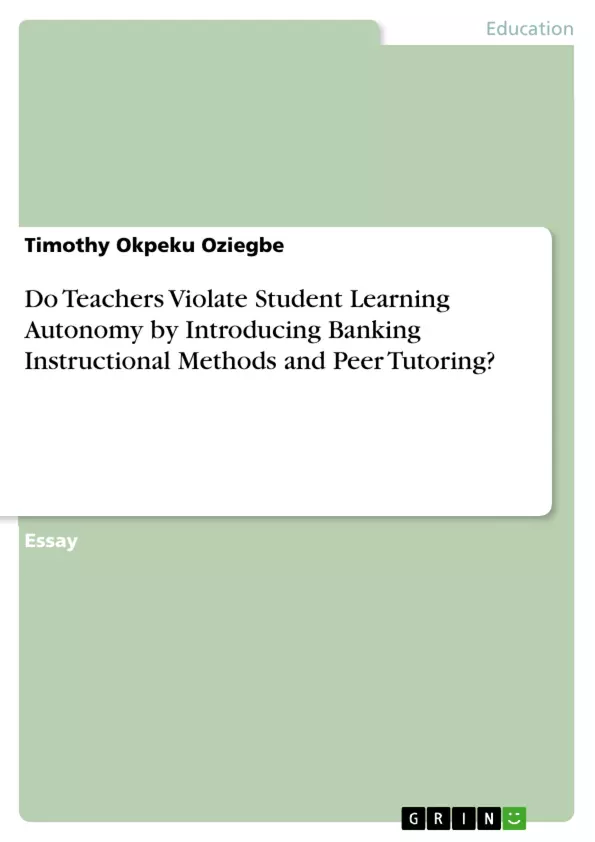A school is made up of students from different ethnic groups, cultures, races, values, and beliefs, which dictates teacher’s ways of relating and interacting with the students. In schools, the teachers are faced with the challenge of improving students' academic achievement in various subjects across the curriculum. The ability to implement the curriculum requires the commitment of the teachers. The best approach for appropriate learning would be the quality of teachers in terms of training and qualification as they improve students' learning outcomes and academic achievement. Teachers' professional training and qualifications have a significant impact on academic achievement. The role of teachers' intellectual autonomy is confronted with the delivery of the school curriculum. This paper x-rays the teaching method of banking and peer tutoring as a violation of students' learning autonomy by teachers.
Inhaltsverzeichnis (Table of Contents)
- Introduction
- Key Concept
- Banking Instructional Method
- Peer Tutoring
- Conclusion
Zielsetzung und Themenschwerpunkte (Objectives and Key Themes)
This paper explores the potential violation of student learning autonomy by teachers when using traditional banking instructional methods and peer tutoring. The study aims to highlight the implications of these methods on student engagement and participation in the learning process.
- The impact of banking instructional methods on student autonomy
- The role of peer tutoring in shaping student autonomy
- The potential for bias in peer tutor selection
- The importance of student voice and participation in learning
- The need for alternative teaching methods that foster autonomy
Zusammenfassung der Kapitel (Chapter Summaries)
Introduction
The introduction discusses the importance of teachers in shaping the quality of education and the challenges they face in fostering student learning. It highlights the influence of various factors on the teaching and learning environment, emphasizing the crucial role of teachers in encouraging student engagement and promoting different learning styles.
Key Concept
Banking Instructional Method
This section defines the concept of banking instruction, where teachers act as knowledge depositors and students as passive recipients. It analyzes how this method can limit student participation and autonomy by centralizing the teacher's role in the learning process. Examples from developing countries illustrate the typical implementation of banking instruction in classrooms.
Peer Tutoring
The paper examines peer tutoring as a practice that assigns responsibility to students to support their peers' learning. While acknowledging its potential benefits, it raises concerns about the teacher's role in selecting peer tutors, potentially limiting student autonomy and leading to potential bias. The section explores how peer tutoring can influence student participation and the impact of teacher selection on the process.
Schlüsselwörter (Keywords)
The main keywords and focus topics of the text include teacher characteristics, student learning autonomy, banking instructional methods, peer tutoring, and the potential for bias in peer tutor selection. These concepts are central to understanding the impact of traditional teaching practices on student engagement and the need for alternative approaches that promote student autonomy.
- Quote paper
- Dr. Timothy Okpeku Oziegbe (Author), 2023, Do Teachers Violate Student Learning Autonomy by Introducing Banking Instructional Methods and Peer Tutoring?, Munich, GRIN Verlag, https://www.grin.com/document/1318863



